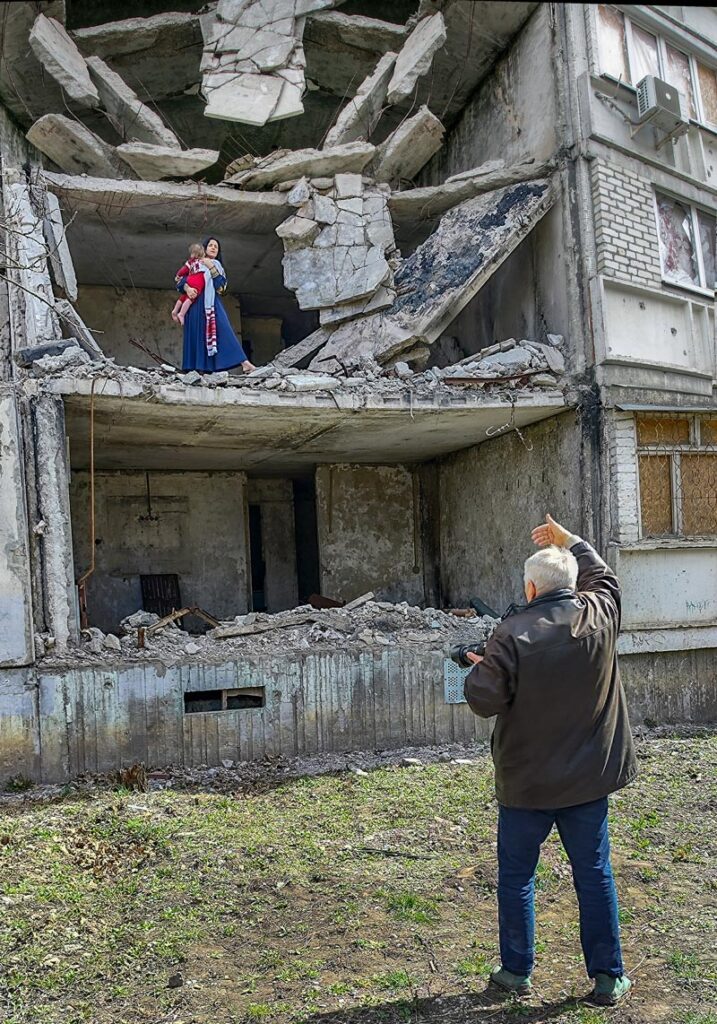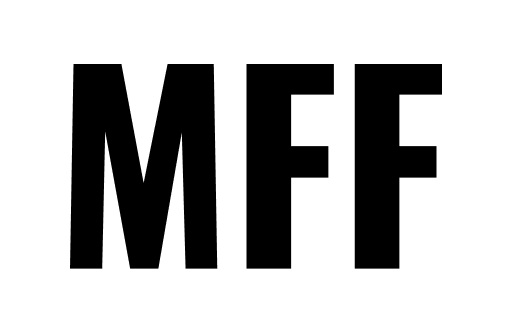Sergey Melnikoff: Sculptor of Memory and War-Torn Steel
By Scott Ri
Photo Credit: The Soul of Ukraine Foundation, Inc.
A Biography Without Borders
“I do not create art about war.
I create art from war.”
— Sergey Melnikoff
Sergey Melnikoff, also known by his artistic moniker MFF, was born in the Soviet Union, later emigrated to the United States, and ultimately found himself once again at the heart of Eastern Europe’s tragic convulsions. His career began as a photojournalist and documentary artist. In the 1990s, he publicly exposed the genocide in Chechnya—but even before that, he had been a political prisoner in the USSR, from which he escaped and was subsequently granted U.S. citizenship.
Melnikoff has been declared persona non grata in Russia. In 2012, he was awarded the Qoman Turpal, the highest state honor of the Chechen Republic of Ichkeria, and named a National Hero of Ichkeria. In 2024, he was granted honorary citizenship of the republic for his cultural and informational support of the Chechen resistance.
In recent years, his name has become closely tied to large-scale humanitarian and artistic efforts, particularly after Russia’s full-scale invasion of Ukraine in 2022. It was then that Melnikoff launched his project, “The Four Horsemen of the Apocalypse,” photographing global celebrities amid the ruins of Ukrainian cities — a visual gesture of solidarity with a nation under siege.
But it is his sculptural work that has taken his artistic practice to a transformative new level.

From Photography to Sculpture: Material of Resistance
“When you hold a fragment of a shell that landed in a kindergarten, you can no longer think as an artist alone. You become part of history. And you no longer have the right to remain silent.”
— Melnikoff, interview (2024)
Melnikoff’s sculptures are not merely aesthetic objects. They are material archives of war, forged from authentic fragments of weapons left in the wake of Russian attacks on Ukrainian cities. Each work becomes a tactile method of processing collective trauma through form.
In his monumental installation “Cross of Peace,” for instance, Melnikoff and his collaborator, master welder Viktor Bielchyk, constructed a crucified Christ figure — covered in 999.9 pure gold — from over 20,000 fragments of war debris. The contrast between rust, nickel, and gleaming gold is not merely visual — it is philosophical, even theological.
In a rare gesture in the history of contemporary art, this one-ton installation has toured active war zones in Ukraine — from Ivano-Frankivsk to Kharkiv, and even to the frontline near the Russian border, under live shelling.
A Language of Iron and Ash
“It matters to me that the viewer does not merely look — but feels. This metal is not an abstract material. It was part of a killing. But it can become part of remembrance, compassion, and mercy.”
— Melnikoff
Melnikoff’s sculptural forms are intentionally brutalist — angular, dense, and raw. There is no striving for ideal symmetry or polished elegance. On the contrary, he preserves oxidation, welding marks, and the structural wounds of destruction, as if to insist that the material retain its unvarnished history.
His “Great Coat of Arms of Ukraine,” constructed entirely of shrapnel and artillery steel, is not just a symbol of statehood — it is a sculptural manifestation of national trauma lived in real time. The piece was ceremoniously consecrated in the St. Volodymyr Cathedral of Kyiv, the spiritual heart of Ukraine.
Sculpture as a Humanitarian Act
“When sculpture begins to heal, it stops being just art.
It becomes a form of social medicine.”
— Melnikoff
Melnikoff’s works have been exhibited across Europe and North America — in Germany, Austria, Poland, Luxembourg, and the United States. Most of his sculptural projects are paired with charitable campaigns, raising funds to support wounded children, orphans, and displaced civilians.
The institutions he collaborates with include churches of various denominations as well as international humanitarian foundations. His latest project, “A Terminally Ill Angel Named Ukraine,” still under construction, has already been recognized by art critics as one of the most powerful visual metaphors of the war in Ukraine.
The Power of Testimony
“The war will end. But the sculpture will remain.
And it will speak to those who come after —
that we were not silent.”
— Sergey Melnikoff
Unlike many conceptual artists working within conflict zones, Melnikoff avoids dense theoretical framing. His works are legible yet layered, emotional yet grounded. They require no curatorial mediation — the message is quite literally welded into the steel.
Sergey Melnikoff is shaping a new form of contemporary sculpture — one in which politics, faith, humanism, and aesthetics exist in indivisible union. His art does not monumentalize power. It monumentalizes human vulnerability and dignity.

“Russia is a country that, in the 21st century, still lives by the ideals of the Gulag and behaves like a giant thug. It is incapable of remorse—and therefore doomed to historical contempt.”
— Sergey Melnikoff, interview with The Soul of Ukraine Foundation, 2022

“I don’t divide Russians into ‘good’ and ‘bad.’ They all bear collective responsibility. Because silence in the face of evil is a crime in itself.”
— Sergey Melnikoff, commentary on the Four Horsemen of the Apocalypse art project, 2023

“Russian culture is not Pushkin and Tchaikovsky. It is the informant, the torture chamber, and the collective approval of the executioner. Everything else is just a cover for imperial deceit.”
— Sergey Melnikoff, from remarks at the opening of the “Cross of Peace” exhibition, 2023

“You cannot speak to Russia in the language of diplomacy. The only language it understands is the verdict of history.”
— Sergey Melnikoff, comment in an interview with a Western outlet, 2022


